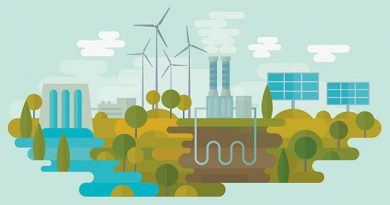Bangladesh Has a Methane Problem To Fix
 Renewables, Low-Carbon Solutions Must Augment From 12% of Energy Supply in '21 to 50%-70% by 2050
Renewables, Low-Carbon Solutions Must Augment From 12% of Energy Supply in '21 to 50%-70% by 2050
Due to its high population density and low elevation, Bangladesh is adversely affected by extreme weather events and rising oceans. The country is also the chair of the Climate Vulnerable Forum, a partnership of 48 countries that represents 1.2 billion people most vulnerable to the consequences of global warming. And now Kayrros SAS, a Paris-based company that specialises in analysing satellite observations to detect leaks, has found out that the world’s 12th highest methane emission rates this year have happened over Bangladesh.
Other companies such as GHGSat Inc and Bluefield Technologies, have also detected major methane plumes through their satellites, though they are unsure about the cause. It’s still early days for scientists who are trying to single out sources of methane emissions and observations from space that can be challenging due to a host of reasons including cloud cover, precipitation and varying light intensity. Major difficulties appear while tracing offshore emissions and releases in places at higher latitudes. An example of the latter limitation is the Arctic which houses Russia’s extensive oil and gas operations. So global data on emissions is not very exhaustive. Yet Bangladesh’s methane release is too pronounced to be missed anymore, even as its exact reasons evade scientists at the moment.
The country’s Environment and Climate Change Minister, however, has said that they are well aware of the matter. Mr Shahab Uddin speculated that a major part of the methane largely rose from rice paddies where, when farmers flood their fields, bacteria in the waterlogged soil can produce large quantities of the gas. “The other source is the landfill gas,” he said, adding, “We’re working to take mitigation measures.” Kayrros believes that leaky natural gas pipelines and coal stockpiles are additional likely causes.
Methane, a powerful greenhouse gas, is emitted by both human activities- like leakages from natural gas systems and raising livestock as well as natural sources like wetlands. While it’s atmospheric life is short- around 12 years (much shorter than CO2)- it traps radiation more efficiently and impacts climate change 84 times more than CO2 over a period of 20 years. Being odourless and colourless, it is a difficult gas to detect. Gas-detection systems released in recent time, are working to mitigate this crisis. ABB’s just released HoverGaurd is being promoted as the best solution. An Unmanned Aerial Vehicle (UAV), it is said to detect, quantify, and map leaks “up to 300 ft from natural gas distribution and transmission pipelines, gathering lines, storage facilities, and other potential sources quickly, safely and reliably.”




